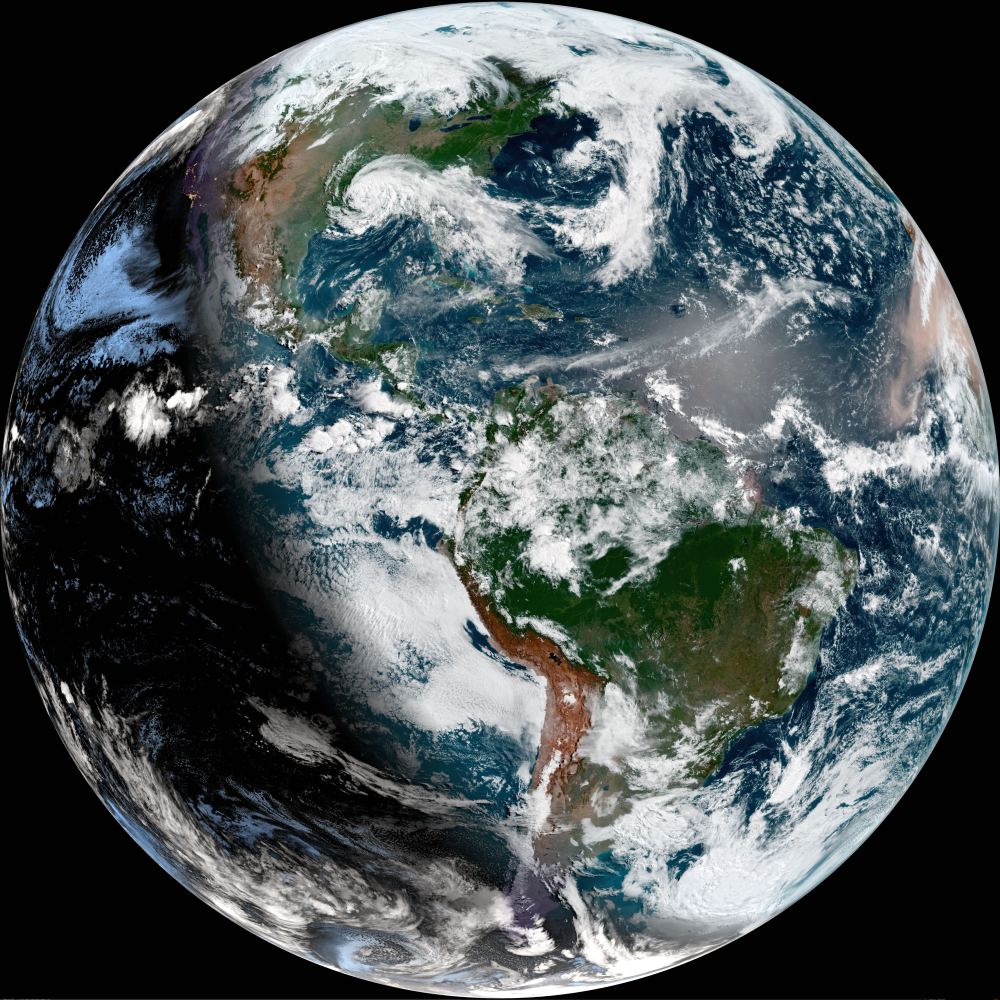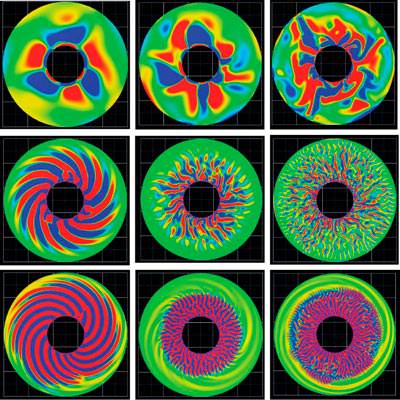[/caption]
Why does the Earth’s magnetic field ‘flip’ every million years or so? Whatever the reason, or reasons, the way the liquid iron of the Earth’s outer core flows – its currents, its structure, its long-term cycles – is important, either as cause, effect, or a bit of both.
The main component of the Earth’s field – which defines the magnetic poles – is a dipole generated by the convection of molten nickel-iron in the outer core (the inner core is solid, so its role is secondary; remember that the Earth’s core is well above the Curie temperature, so the iron is not ferromagnetic).
But what about the fine structure? Does the outer core have the equivalent of the Earth’s atmosphere’s jet streams, for example? Recent research by a team of geophysicists in Japan sheds some light on these questions, and so hints at what causes magnetic pole flips.
About the image: This image shows how an imaginary particle suspended in the liquid iron outer core of the Earth tends to flow in zones even when conditions in the geodynamo are varied. The colors represent the vorticity or “amount of rotation” that this particle experiences, where red signifies positive (east-west) flow and blue signifies negative (west-east) flow. Left to right shows how the flow responds to increasing Rayleigh numbers, which is associated with flow driven by buoyancy. Top to bottom shows how flow responds to increasing angular velocities of the whole geodynamo system.
The jet stream winds that circle the globe and those in the atmospheres of the gas giants (Jupiter, Saturn, etc) are examples of zonal flows. “A common feature of these zonal flows is that they are spontaneously generated in turbulent systems. Because the Earth’s outer core is believed to be in a turbulent state, it is possible that there is zonal flow in the liquid iron of the outer core,” Akira Kageyama at Kobe University and colleagues say, in their recent Nature paper. The team found a secondary flow pattern when they modeled the geodynamo – which generates the Earth’s magnetic field – to build a more detailed picture of convection in the Earth’s outer core, a secondary flow pattern consisting of inner sheet-like radial plumes, surrounded by westward cylindrical zonal flow.
This work was carried out using the Earth Simulator supercomputer, based in Japan, which offered sufficient spatial resolution to determine these secondary effects. Kageyama and his team also confirmed, using a numerical model, that this dual-convection structure can co-exist with the dominant convection that generates the north and south poles; this is a critical consistency check on their models, “We numerically confirm that the dual-convection structure with such a zonal flow is stable under a strong, self-generated dipole magnetic field,” they write.
This kind of zonal flow in the outer core has not been seen in geodynamo models before, due largely to lack of sufficient resolution in earlier models. What role these zonal flows play in the reversal of the Earth’s magnetic field is one area of research that Kageyama and his team’s results that will now be able to be pursued.
Sources: Physics World, based on a paper in the 11 February, 2010 issue of Nature. Earth Simulator homepage







